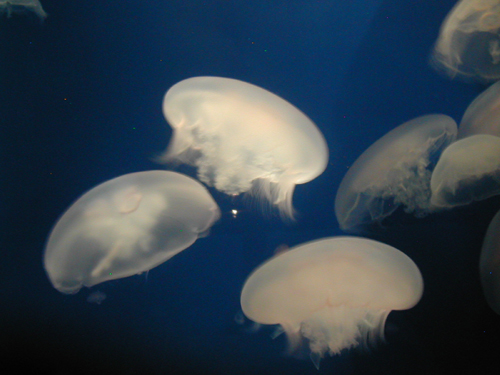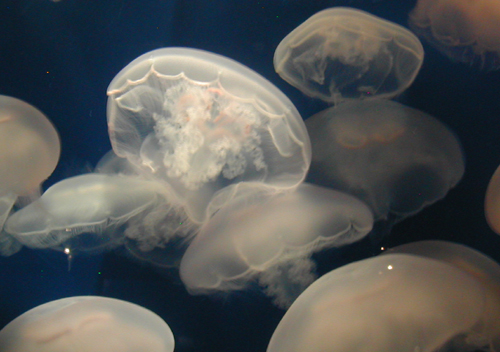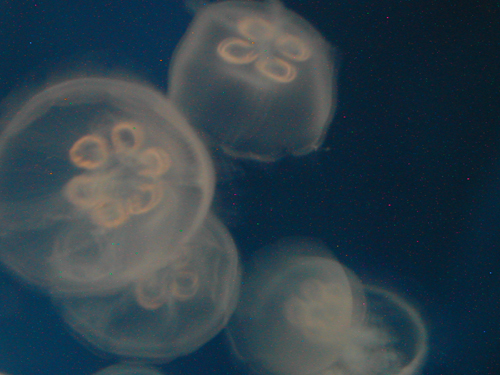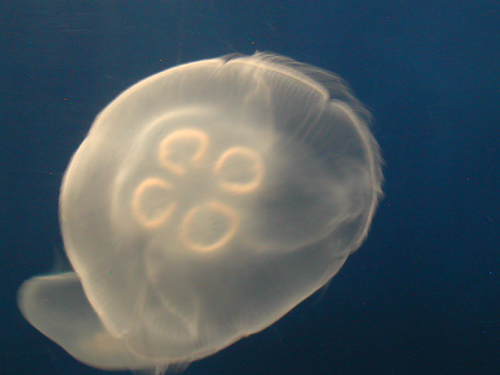
There are lots of cool things to see at the Monterey Bay Aquarium, but my favorite by a fathom is the assortment of jellyfish. And somehow, among all the jellies they have, it’s the moon jelly that sticks in my mind as the canonical jelly.
As it turns out, probably it shouldn’t. According to the Monterey Bay Aquarium Online Field Guide, the moon jelly (Aurelia labiata) is somewhat unusual in having a fringe of cilia around its bell to sweep in the food. (Other jellies get the job done with dangling tentacles.)

Like other wildlife we know and love, the colors of the moon jelly are affected by its diet, with crustaceans giving the moon jelly a pink or lavender glow and brine shrimp (sea monkeys!) making them turn a bit orange.

The summer I was 13, I went to camp in St. Mary’s City, Maryland, right on the Chesapeake Bay. That summer, the bay was full of jellies — possibly moon jellies, although it’s hard to be certain so many years later. That kind of jellyfish proliferation is often a sign of water with low oxygen and high nutrient levels. (I can’t remember whether there were many farms nearby, but agricultural run-off is one way to put an over-abundance of nutrients into a bay.)

Jellies eat, and jellies get eaten, serving as food for critters like birds and turtles. Unfortunately, plastic bags that have made their way into oceans and bays are sometimes mistaken for jellies by critters hoping to eat them, with predictably disastrous results. If you’re using a plastic bag, make sure it doesn’t become litter. If you see a plastic bag on the beach, pick it up and get it to a trash can.

Ah, jellyfish, what one of my friends calls “living lava lamps”.